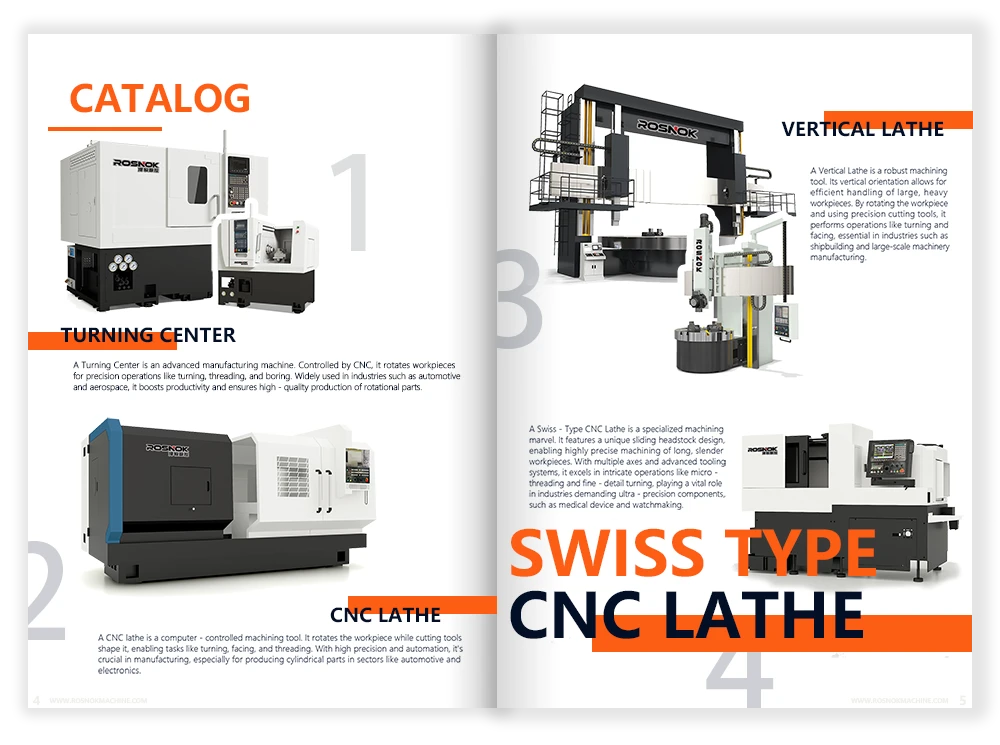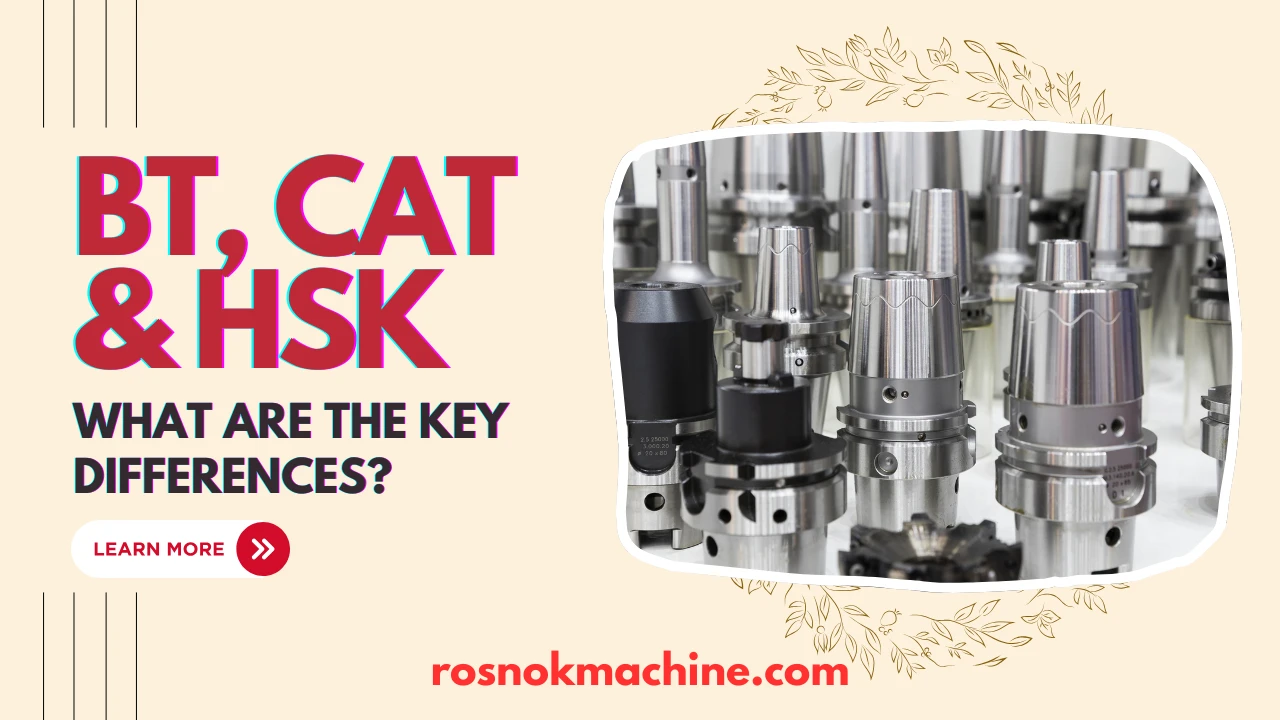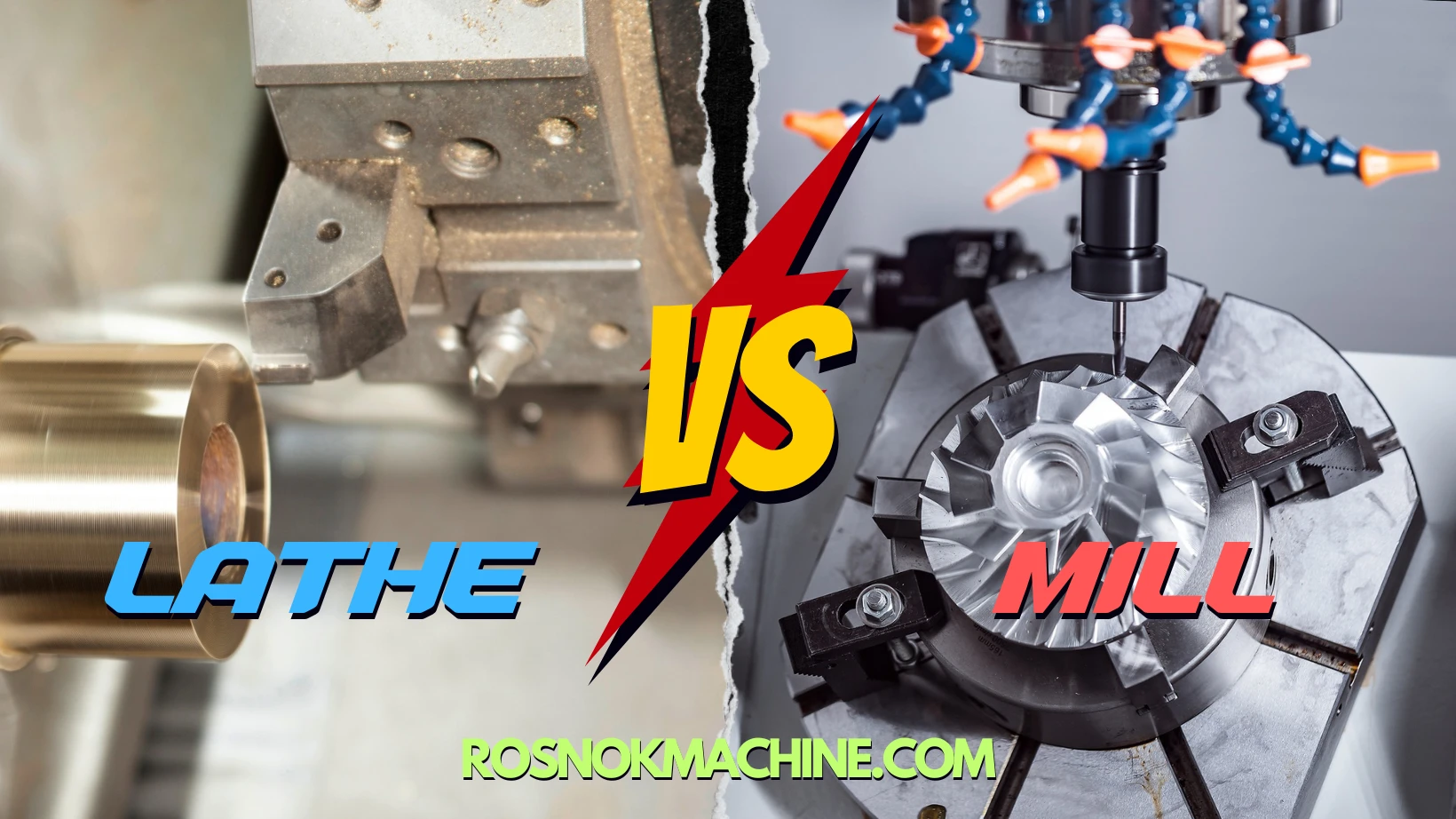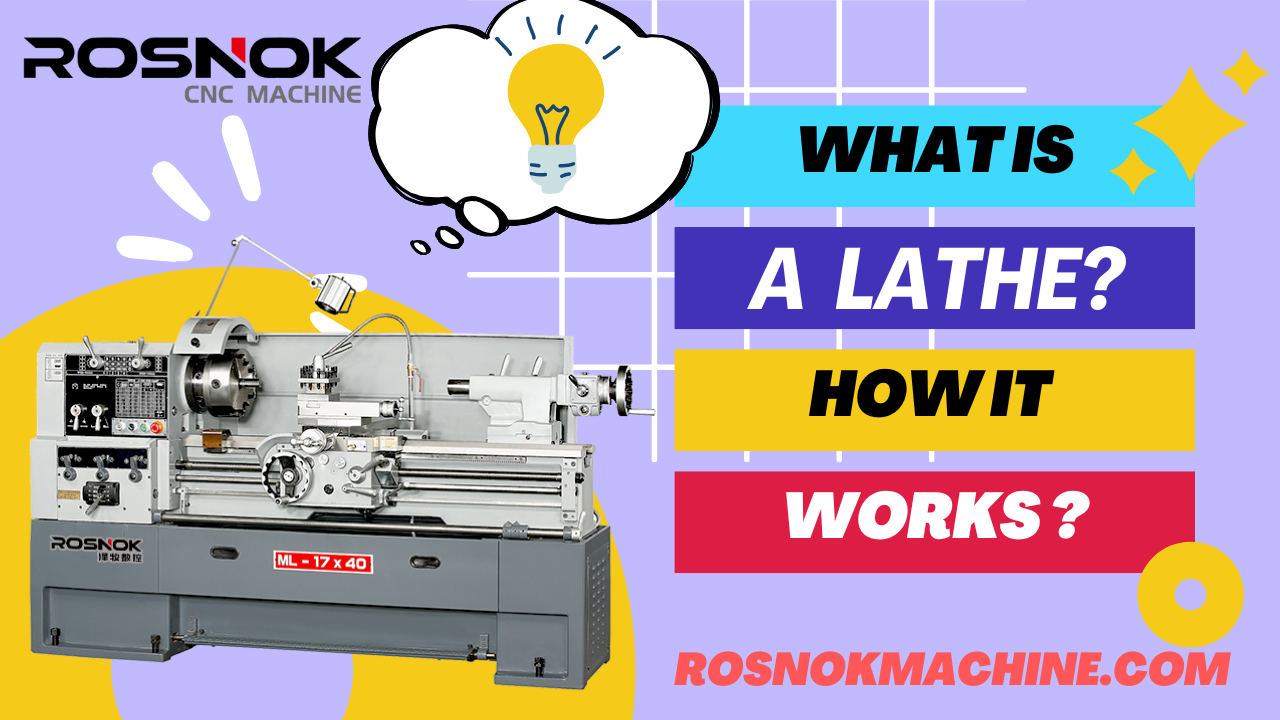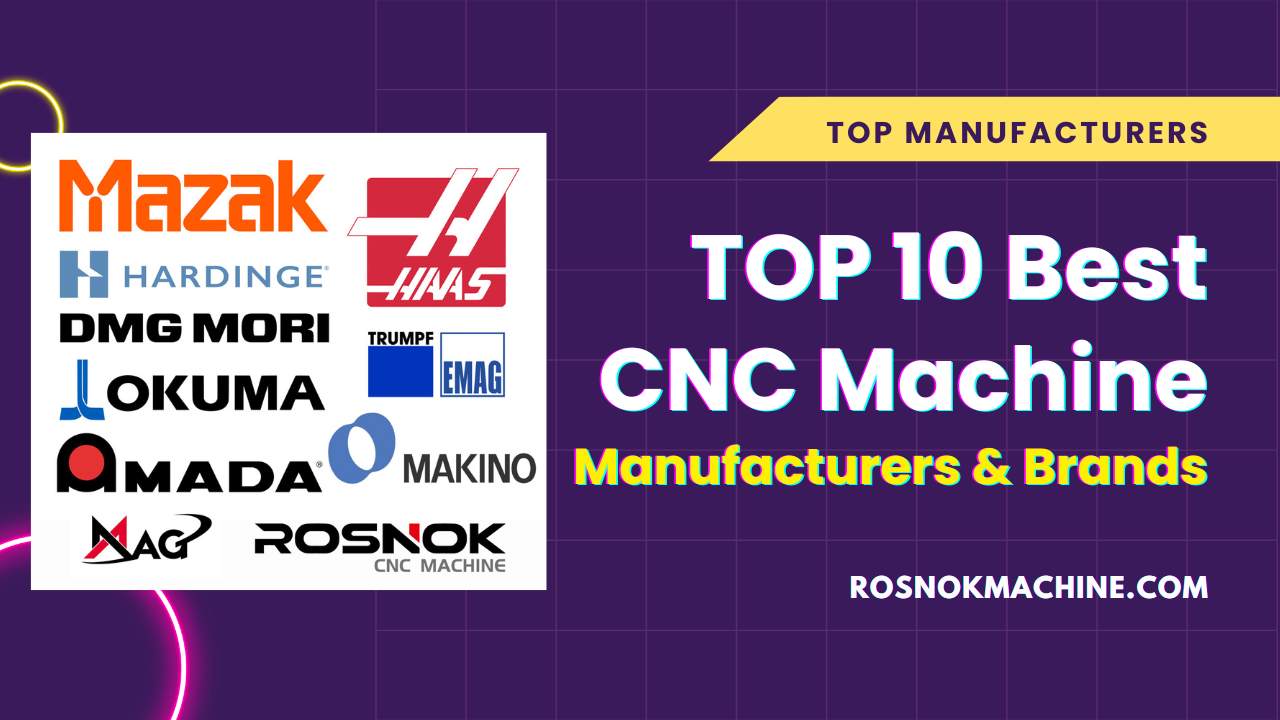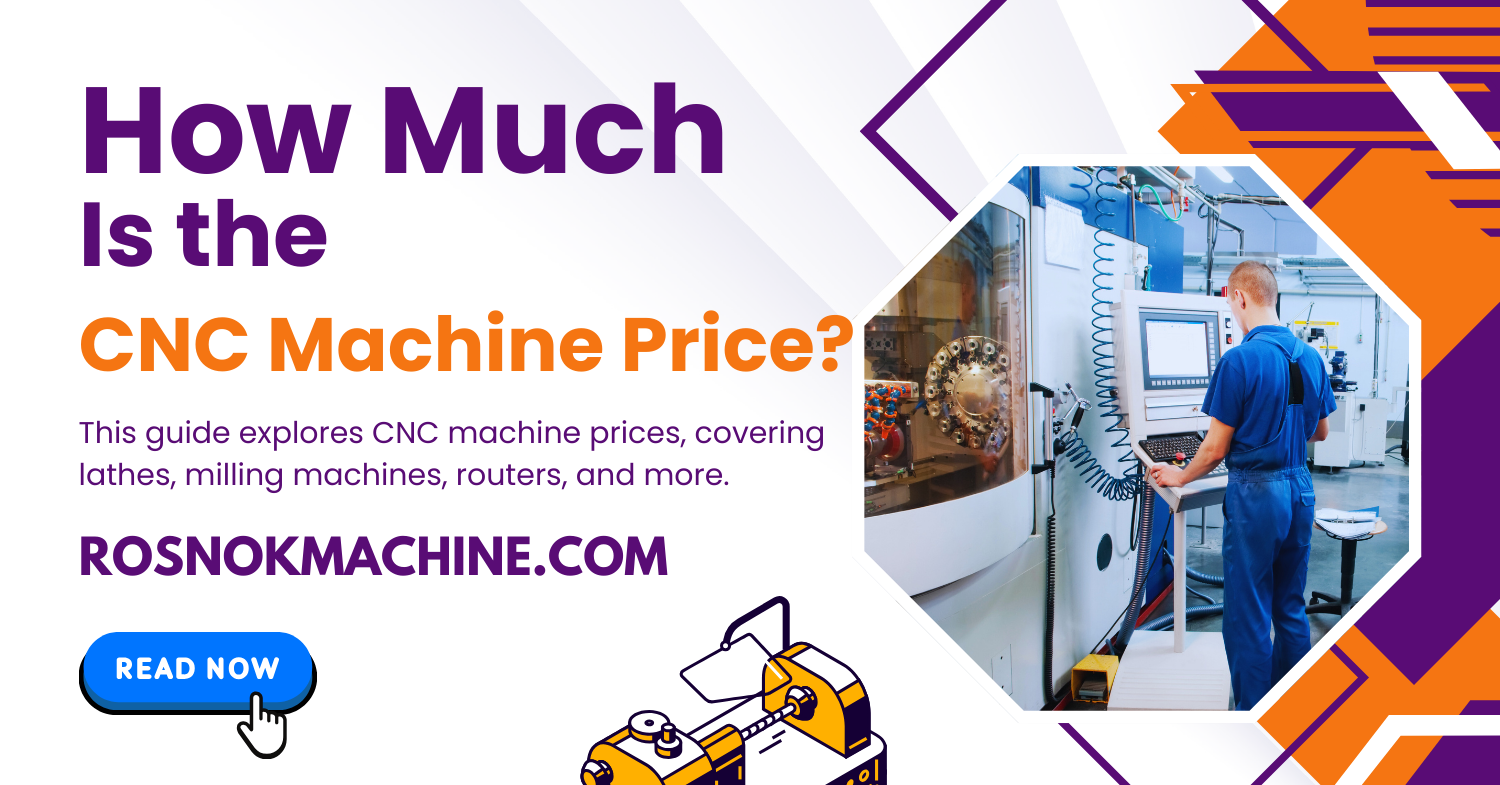Are you struggling to decide between BT, CAT, and HSK tool holders for your CNC machines? Each system looks similar, yet the wrong choice can cause costly issues. Imagine investing in high-speed machining only to find your tool holder limits spindle RPM, reduces accuracy, or shortens tool life, because they picked an interface that doesn’t match their production needs.
The key difference lies in how BT, CAT & HSK tool holders connect to the spindle and perform under speed, rigidity, and precision demands. BT and CAT share a similar V-flange design but differ in drawbar thread standards. HSK takes another path, using a hollow shank that grips both inside and out. This tighter fit gives it the edge for accuracy and speed. By understanding these basics, you can match each holder type to your machining needs without confusion.
Curious how each tool holder works in detail? Let’s break down BT, CAT, and HSK step by step, from structure to performance, to guide your CNC decisions.
What is a BT Tool Holder?
A BT tool holder is one of the most common spindle taper standards in Asia and Europe, designed with a symmetrical V-flange that provides better balance at higher speeds. Unlike CAT holders that use inch-based threads, BT holders rely on metric threads, making them standard in many European and Asian machines. They are valued for their stability during heavy cuts, consistent tool change accuracy, and broad availability at competitive costs. BT tool holders are widely used in automotive, mold, and general machining, offering a dependable balance of rigidity, repeatability, and affordability. While they cannot match HSK holders for extreme high-speed precision, BT remains a trusted and cost-effective choice for most production environments.
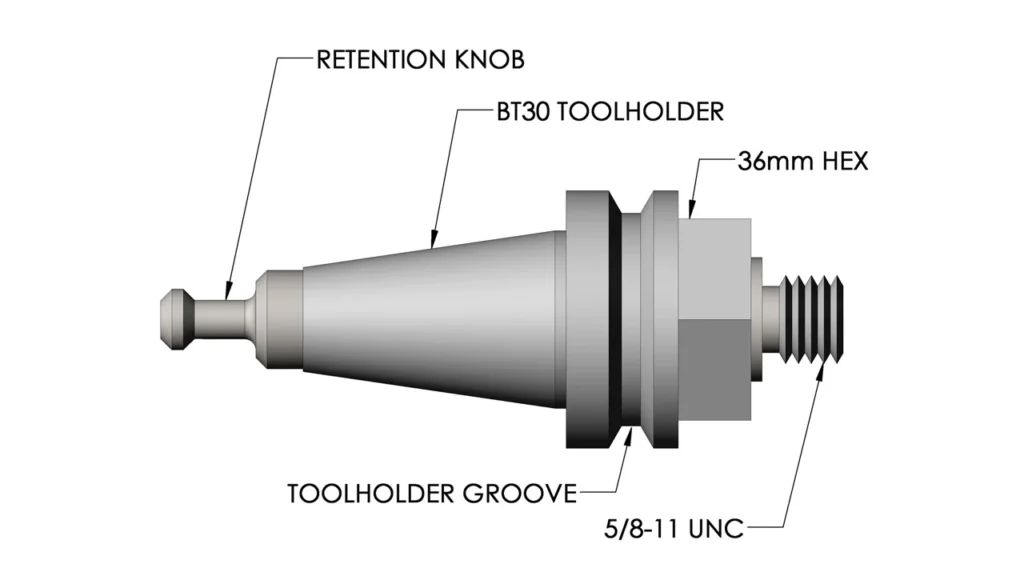
What is a CAT Tool Holder?
A CAT tool holder, also called a V-flange or Caterpillar taper, is the dominant spindle taper standard in North America. Like BT, it uses a 7/24 taper angle, but its flange is slightly different and the retention knob threads follow inch-based UNC standards. This makes CAT holders highly compatible with U.S.-made CNC machines and widely supported across the North American market.
Their main strength lies in durability and rigidity, making them ideal for heavy-duty cutting, aerospace components, and general machining where robustness is essential. At very high spindle speeds, however, CAT holders may show less balance than BT or HSK due to their asymmetric flange. Even so, in the U.S. market, CAT holders remain a trusted and cost-effective choice for industries that need strong, reliable performance and readily available tooling.
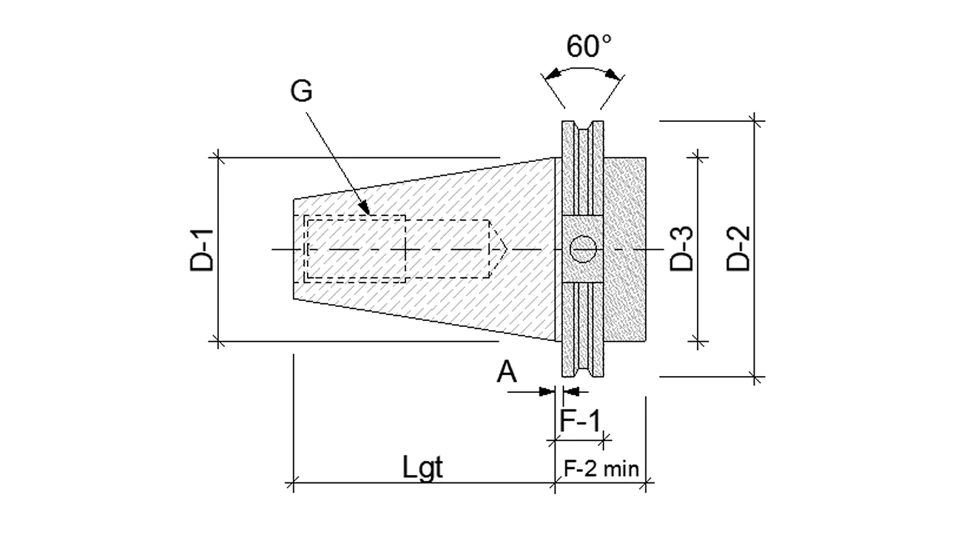
What is an HSK Tool Holder?
An HSK tool holder, short for Hohl-Schaft-Kegel (German for hollow shank taper), is a high-precision spindle taper standard developed in Europe for modern high-speed machining. Unlike BT and CAT holders that rely on a 7/24 taper, HSK uses a short, hollow shank with dual contact—engaging both the taper surface and the spindle face. This dual contact ensures exceptional rigidity, accuracy, and balance, even at spindle speeds above 20,000 RPM.
HSK holders are especially valued in industries where precision and repeatability are critical, such as aerospace, medical devices, and advanced mold making. Their main advantages include superior clamping accuracy, minimal runout, and excellent performance at high speeds. However, these benefits come at a higher cost, and they require machines specifically built with HSK spindles. Even so, for manufacturers focused on precision, efficiency, and long-term competitiveness, HSK tool holders represent the most advanced and reliable option in today’s CNC machining.
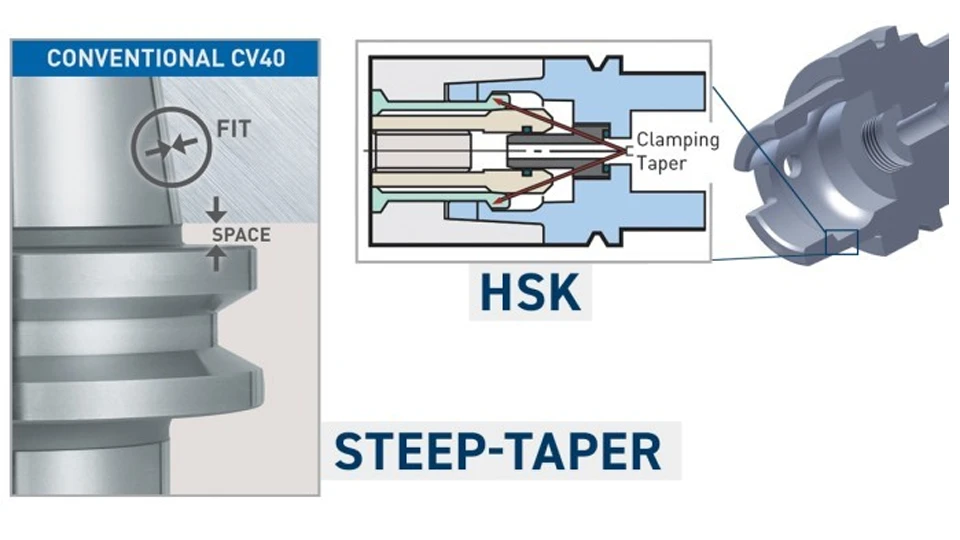
Key Differences Between BT, CAT & HSK Tool Holders
Although BT, CAT, and HSK tool holders all serve the same purpose—connecting cutting tools to the CNC spindle—their structural standards and performance vary in important ways. BT and CAT share the 7/24 taper design, but BT uses metric threads and a symmetrical flange, while CAT follows inch-based threads and an asymmetric flange. These small design details affect balance, spindle compatibility, and regional adoption. HSK, on the other hand, takes a different path with its hollow shank and dual contact system, giving it clear advantages in high-speed and high-precision machining.
When it comes to performance, BT and CAT holders are both rigid and cost-effective, making them the workhorses of general machining, automotive, and aerospace manufacturing. However, CAT holders dominate in North America, while BT is more common in Asia and Europe. HSK excels in precision and speed, outperforming both BT and CAT in applications above 20,000 RPM or where micron-level accuracy is essential. The trade-off is higher cost and the need for specialized machines.
Pros and Cons Summary Table
| Tool Holder | Pros | Cons | Best Fit |
|---|---|---|---|
| BT | Symmetrical design, good balance, stable for heavy cuts, widely available in Asia/Europe | Less suited for very high RPM | General machining, automotive, mold making |
| CAT | Strong and durable, excellent for heavy-duty machining, widely supported in the U.S. | Asymmetric flange, less balance at high speeds | North American automotive, aerospace, heavy industry |
| HSK | Dual contact (taper + face), high accuracy, excellent at high RPM, minimal runout | Higher cost, requires dedicated HSK spindles | Aerospace, medical, high-precision mold and die |
In short, BT and CAT remain practical, cost-effective solutions for most industries, while HSK represents the advanced choice for shops prioritizing extreme precision and high-speed productivity.
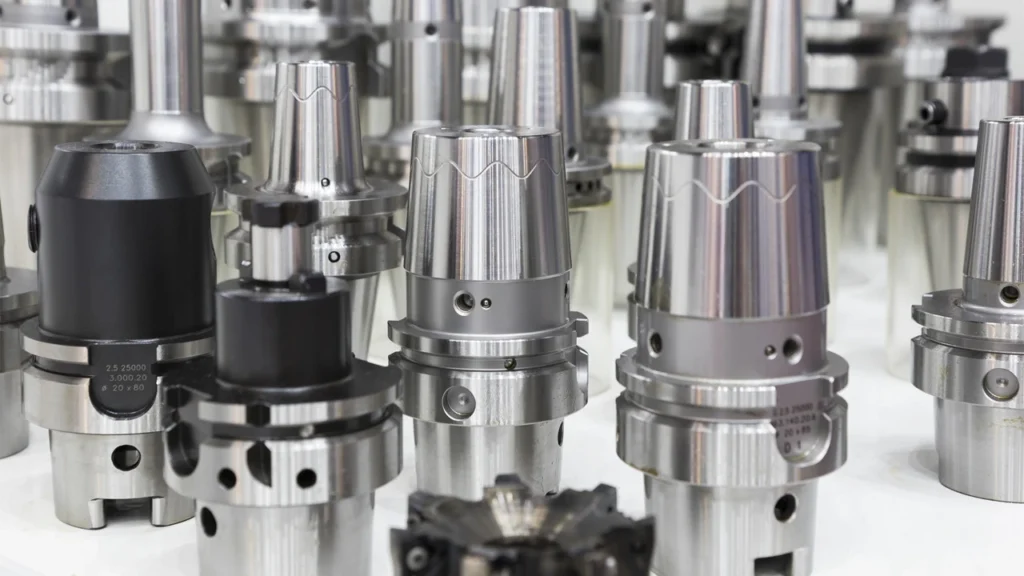
Choosing the Right Tool Holder for Your CNC Machine
Selecting between BT, CAT, and HSK tool holders comes down to your machine type, production goals, and regional supply chain. There is no “one-size-fits-all” answer, but understanding when each standard works best can guide your investment.
When to Use BT
Choose BT tool holders if your machines are built to metric standards and your operations require both rigidity and versatility. They are widely available in Asia and Europe, making them a cost-effective option for automotive parts, mold work, and general machining.
When to Use CAT
CAT tool holders are the right fit if you operate primarily in North America, especially with legacy or U.S.-built machines. Their strength and durability make them dependable for heavy-duty cutting, aerospace machining, and industries that rely on a stable tooling supply chain.
When to Use HSK
HSK tool holders are best for shops that prioritize precision, speed, and efficiency. If your CNC machines support HSK spindles, these holders deliver superior balance, accuracy, and tool life at high RPM. They are commonly chosen in aerospace, medical, and high-end mold applications where micron-level tolerances matter.
Cost, Availability, and After-Sales Considerations
Beyond performance, practical factors like availability, cost, and service support should guide your choice. BT and CAT holders are generally more affordable and easier to source, while HSK comes at a premium but pays off in high-precision environments. It’s also essential to ensure local distributors can supply pull studs, collets, and other accessories to keep downtime minimal.
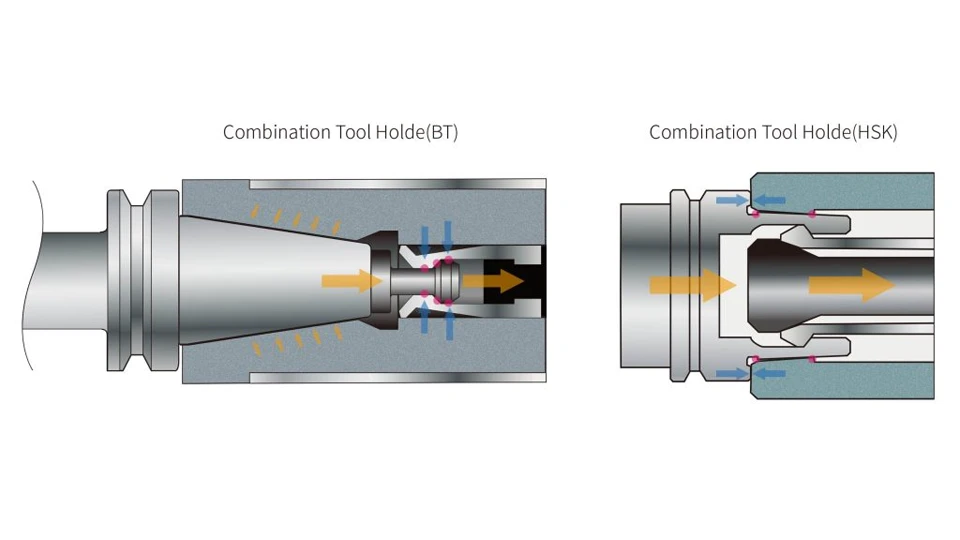
Conclusion
Understanding the differences between BT, CAT, and HSK tool holders is not just a matter of technical detail — it is the key to seeing why these standards exist and how they shape machining outcomes worldwide. BT thrives in Asia and Europe with its balance and metric design, CAT dominates the U.S. with its robust inch-based standard, and HSK defines the modern high-speed, high-precision benchmark with its dual-contact taper. Each has its own strengths, limitations, and regional role, and recognizing these differences helps you make sense of the choices in front of you.
At Rosnok, we integrate this understanding directly into the machines we design and build. Our machining centers and lathes are engineered to support the standards our customers rely on, whether BT, CAT, or HSK, ensuring that tool holder compatibility is never an afterthought. By combining global experience with flexible manufacturing, we help companies not only understand these differences but also put them to work in production, reliably and efficiently.
